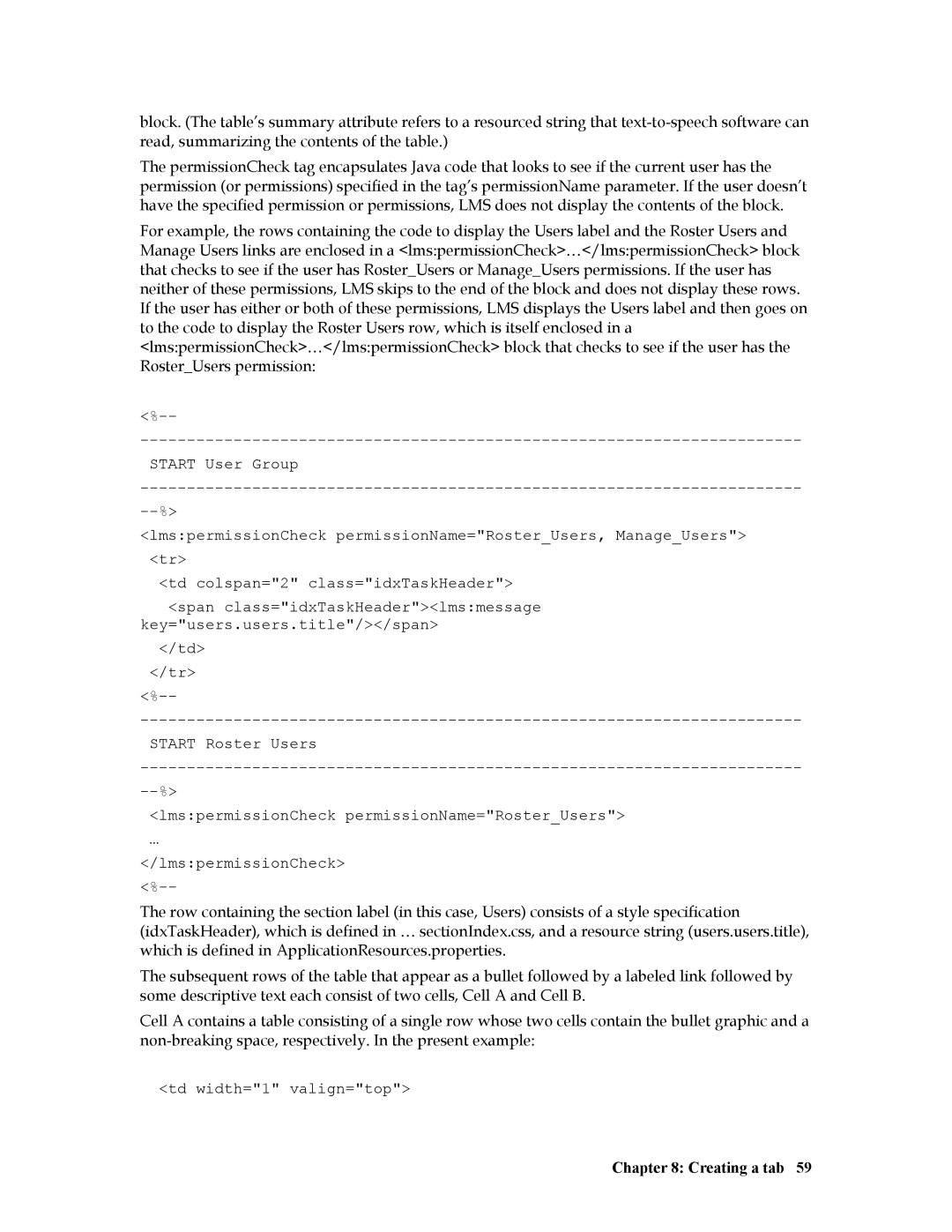block. (The table’s summary attribute refers to a resourced string that
The permissionCheck tag encapsulates Java code that looks to see if the current user has the permission (or permissions) specified in the tag’s permissionName parameter. If the user doesn’t have the specified permission or permissions, LMS does not display the contents of the block.
For example, the rows containing the code to display the Users label and the Roster Users and Manage Users links are enclosed in a <lms:permissionCheck>…</lms:permissionCheck> block that checks to see if the user has Roster_Users or Manage_Users permissions. If the user has neither of these permissions, LMS skips to the end of the block and does not display these rows. If the user has either or both of these permissions, LMS displays the Users label and then goes on to the code to display the Roster Users row, which is itself enclosed in a <lms:permissionCheck>…</lms:permissionCheck> block that checks to see if the user has the Roster_Users permission:
START User Group
<lms:permissionCheck permissionName="Roster_Users, Manage_Users"> <tr>
<td colspan="2" class="idxTaskHeader">
<span class="idxTaskHeader"><lms:message key="users.users.title"/></span>
</td>
</tr>
START Roster Users
<lms:permissionCheck permissionName="Roster_Users">
…
</lms:permissionCheck>
The row containing the section label (in this case, Users) consists of a style specification (idxTaskHeader), which is defined in … sectionIndex.css, and a resource string (users.users.title), which is defined in ApplicationResources.properties.
The subsequent rows of the table that appear as a bullet followed by a labeled link followed by some descriptive text each consist of two cells, Cell A and Cell B.
Cell A contains a table consisting of a single row whose two cells contain the bullet graphic and a
